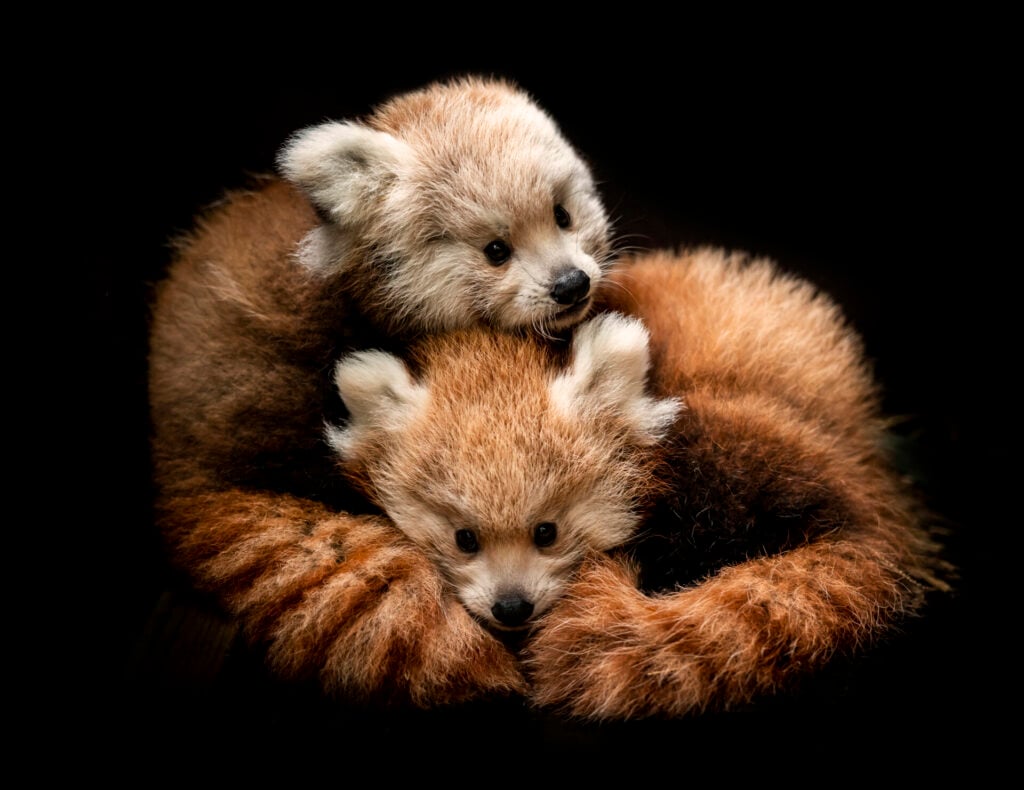Dubai-based Jenna regularly tries to coax her 12-year-old daughter Katy outside to appreciate nature. As well as growing their own veg, she has suggested joining a turtle conservation project, playing volleyball in the park or flying a kite on the beach. But Katy has no interest in venturing outside unless it’s to make a TikTok video or an Instagram reel. Her happy place is in her bedroom, ‘chatting’ to her friends on social media.
‘I despair for her,’ says Jenna, a 48 year-old paralegal. ‘I grew up in the UK riding ponies, having picnics, taking our dogs for walks and spending all day playing outside with my friends. Even now, I know that when I’m stressed, a long hike or swim will sort out my head. But Katy has no interest whatsoever in the outside world. I worry about her and her generation.’
Jenna isn’t alone in her fears. While older generations have fond memories of their own ‘free range’ childhood, members of Gen Z (born between 1997 and 2012) and Generation Alpha (born after 2010 – 2025) are spending less and less time in nature. They’re suffering from what author Richard Louv calls ‘nature- deficit disorder’, a term he coined while carrying out research for his book, Last Child in the Woods (Atlantic Books).
Richard, who grew up playing in woods near his Missouri and Kansas homes in the US, explains: ‘It’s not a medical diagnosis but it’s a useful term – a metaphor – to describe what many of us believe are the human costs of alienation from nature.

‘Among these costs are diminished use of the senses, attention difficulties and higher rates of physical and emotional illnesses. I believe this nature deficit damages children, but I think of it as more of a disorder of society – it shapes adults, families, whole communities, and the future of our stewardship of nature.’
But while most of us blame the advent of technology for our children turning their backs on nature, Richard doesn’t. Instead, he points his finger at urbanisation around the world, which has led to a reduction in natural spaces. He says bad urban design has created cities for cars, not people. And he believes many parents are simply too afraid to let their children play out in modern times.
The Hybrid Mind
‘I’m not anti-tech,’ he says. ‘I’m pro- balance. We need nature in our lives as a balancing agent. We need what I call ‘the hybrid mind’ – both ways of knowing the natural and the virtual world. We need to use computers to process intellectual data, and natural environments to ignite all our senses and accelerate our ability to learn and to feel.’
Jasmine Navarro, who runs a coaching business, NAVA, between Dubai and the UK, is now working with children aged six to 11 in schools across the UAE on the Marisa Peer 5-Day Challenge to address the challenges posed by nature-deficit disorder, aiming to instill a sense of wellbeing and confidence in pupils.

‘In the UAE, especially in urban areas like Dubai, children are often drawn to screen-based activities, leaving minimal room for unstructured outdoor play in natural settings,’ she says. ‘It’s crucial for children to establish a connection with nature. Regular exposure to nature enhances creativity, imagination and problem-solving skills, as well as having a calming effect, reducing stress and improving mental health. Physical activities in natural settings contribute to the development of motor skills.’
Green Spaces
So, is it just a case of heading to the park and spending time among trees, plants and flowers? That’s a start, according to Richard, who also wrote Vitamin N, 500 Ways to Enrich the Your Family’s Health &Happiness.
‘Positive access to nature should be considered a human right, especially for children.We can all create new natural habitats in and around our homes, schools, cities and suburbs so that our children grow up in nature – not with it, but in it.’
Richard Louv, Author
‘Any green space will provide some benefit to mental and physical wellbeing,’ he agrees, ‘but we do know that the greater the biodiversity in an urban park, then the greater the psychological benefits to people. Even the densest urban neighbourhoods can have more natural habitat – green roofs and yards with native species can help bring back butterfly and bird migration routes.
‘Positive access to nature, including in cities, should be considered a human right, especially for children. We can all create new natural habitats in and around our homes, schools, neighbourhoods, workplaces, cities and suburbs so that our children grow up in nature – not with it, but in it. It isn’t about getting back to nature. It’s about going forward in nature.’
‘This nature deficit damages children but it is more a disorder of society – it shapes adults, families, whole communities, and the future of our stewardship of nature.’

So how can we switch things around and protect our children from this disorder? Richard and Jasmine share their tips.
Start Them Young
Explore the universe together, recommends Richard. ‘In your child’s first months and years, go to a park together when the weather’s right, spread out a blanket and lie side by side for an hour or more,’ he says. ‘Look up through moving leaves and branches at clouds or the moon or stars. Bring water and milk. You may be there a long time!’
Get It In The Diary
Plan your family’s time in nature, just as you would plan a family holiday, says Richard (richardlouv.com). ‘Try skipping organised sports for a season and use that time to get outside,’ he suggests. ‘This won’t work for everyone, but for busy families, taking time for nature requires taking time – and putting it on the calendar.’
Keep It Natural
Encourage outdoor play, urges Jasmine. ‘Allocate dedicated time for children to explore, play and connect with nature,’ she says. ‘Whether it’s a local park, nature reserve, garden, or the backyard, providing opportunities for free play in the outdoors is essential. Ensure activities include nature – get the children gardening or out on scavenger hunts so they learn about ecosystems, flora and fauna.’
Practise Friluftsliv
A Norwegian concept, introduced in 1859 and pronounced free-loofts-liv, this roughly translates as ‘free air life’, reveals Richard. ‘It’s a general lifestyle idea that promotes outdoor activity,’ he says. ‘The protocol is straight-forward. Be outside as much as possible. Commit to being in nature for a minimum amount of time every day, or for a certain number of days per month.’

Better Connection
Tech isn’t the enemy, but it can be a barrier, reveals Richard. ‘Periodically leave your mobile in your pocket, ringer off, so you’re more present with your child,’ he suggests. ‘Limit access to texting, computers and TV for part of a day or part of the week. Saturday could be Outdoor Play Day for kids and parents.’
Do a Digi Detox
Go a step further and commit to a few days away from technology for a total digital detox, urges Richard. ‘Take the children camping, rent a cabin or trade homes with someone who misses city life,’ he says. ‘Set your computer to auto-reply and by day four, you’ll all find your sleep patterns return to normal.’
Revive traditions
What did you love doing as a child? Which parts of nature fascinated you? ‘Collect or watch lightning bugs (fireflies) at dusk, then release them at dawn,’ says Richard. ‘Make a leaf collection or keep a terrarium or aquarium. Find a scrap board and place it on bare dirt. Come back in a day or two, lift the board and see how many species have found shelter there. Identify these creatures with the help of a field guide. Return to your board once a month and discover what’s new.’
Build a den
Encourage your children to build a tree house, fort or hut, says Richard. ‘You can provide the raw materials, including sticks, boards, blankets, ropes, and boxes, but it’s best if kids are the architects and builders,’ he says. ‘The older the children, the more complex the construction can be. Books like David Sobel’s Children’s Special Places, and Treehouses and Playhouses You Can Build, by David and Jeanie Stiles will inspire you.’
Plant a Garden
Wherever you live, there are always options for a garden, says Richard. ‘If you live in an urban neighbourhood, create a high-rise garden,’ he says. ‘A landing, deck, terrace or flat roof can accommodate large pots and even trees can survive in containers.
‘If your children are little, choose seeds large enough for them to handle and that mature quickly, including vegetables. Young gardeners can help feed the family. If your community has a farmers’ market, encourage your kids to sell produce, or they could donate to neighbours or to a food bank.’
Make it a family affair
Plan outings to natural settings, suggests Jasmine (withnava.com). ‘Take the whole family to the beach, or on a hiking trail,’ she says. ‘Engaging in outdoor activities as a family not only strengthens bonds, but it also instils a love for nature that children will carry into adulthood.’
Prepare for adventure
Put together a family Go Outside (GO) bag, recommends Richard. ‘Stuff a duffel bag with daypacks, a compass, binoculars, nature guides and a map of your region,’ he says. ‘Add granola bars, hats, gloves, fleeces, sunglasses, hiking poles, comfortable footwear and water bottles. Stash your GO bag in your car trunk. Now you can go outside at a moment’s notice.’













